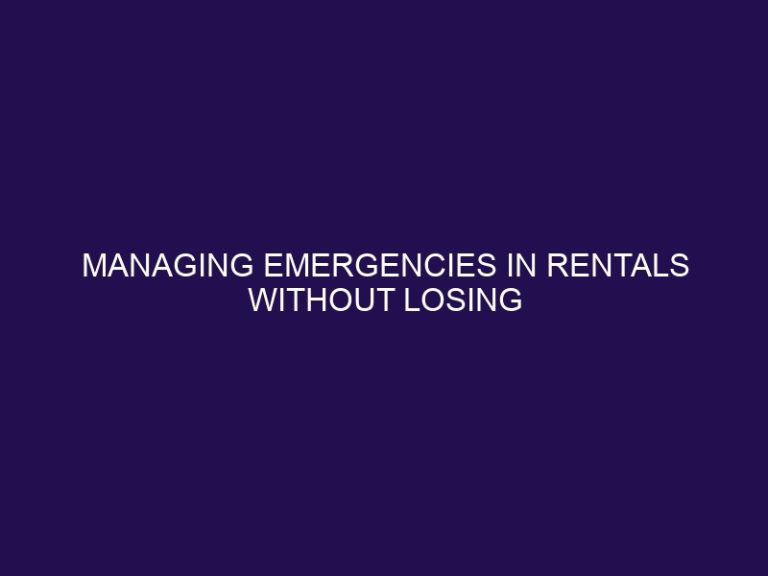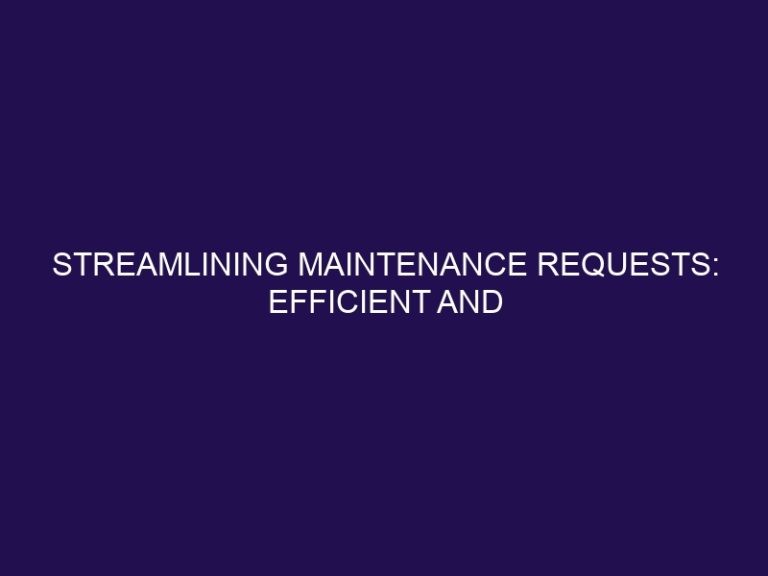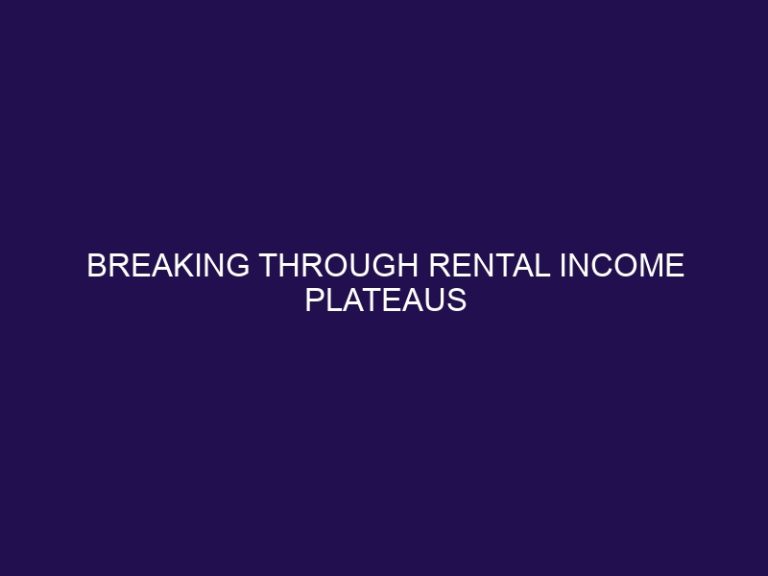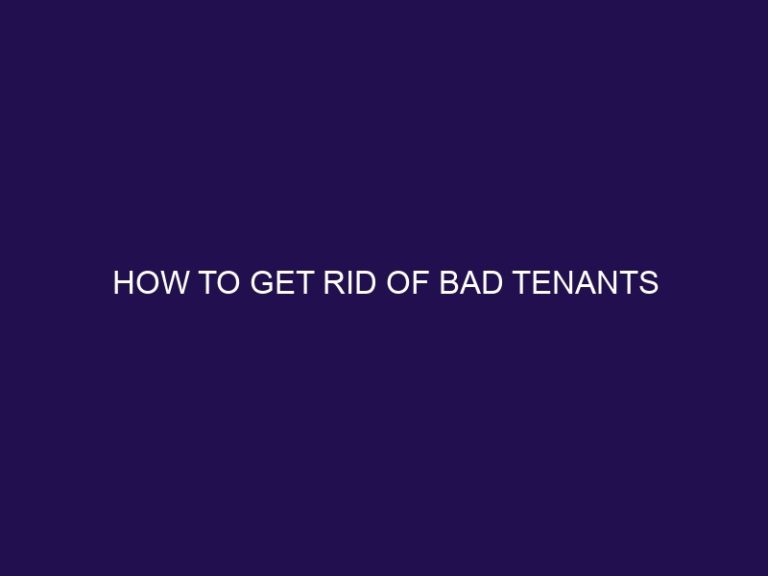BC Residential Tenancy Agreement Explained
A BC Residential Tenancy Agreement is a legal contract between a tenant and a landlord that outlines the rights, obligations, and terms of the tenancy. It serves as a binding agreement that governs the landlord-tenant relationship and ensures a smooth and transparent renting process in British Columbia. This agreement covers crucial aspects such as rental terms, rent amounts, rights and obligations of both parties, important provisions, dispute resolution, termination, and more.
Understanding the rights and obligations is essential for both tenants and landlords. Tenants have the right to quiet enjoyment, privacy, and a safe living environment. They are obligated to pay rent on time, maintain the property, and follow the rules outlined in the agreement. Landlords have the right to receive rent, enter the property for inspections or repairs with proper notice, and provide a habitable living space. They are obligated to maintain the premises and address repairs promptly.
There are key terms and provisions that need to be clearly defined in a BC Residential Tenancy Agreement. These include the rental term and rent amount, security deposit and pet deposit policies, provisions related to entry and inspection, responsibilities for repairs and maintenance, and dispute resolution procedures. Understanding these terms is crucial to avoid misunderstandings or conflicts during the tenancy.
To create and execute a BC Residential Tenancy Agreement, certain information and documents are required. This includes the landlord’s name and address, the tenant’s name, and the address of the rental unit. Both parties must carefully read and understand the agreement before signing it. Copies of the agreement must be provided to both the tenant and the landlord, ensuring that all parties have a complete understanding of the terms and conditions.
Common issues and problems arise in BC Residential Tenancy Agreements, such as disputes between the tenant and the landlord or the need for termination of the tenancy. Resolving disputes often involves negotiation, mediation, or the involvement of the Residential Tenancy Branch. When terminating a tenancy, specific procedures and notice periods must be followed to ensure a fair and legal process.
Understanding the BC Residential Tenancy Agreement is crucial for both tenants and landlords to protect their rights and fulfill their obligations. By familiarizing themselves with the key elements, important terms, and necessary procedures, individuals can navigate the rental process smoothly and avoid potential conflicts.
What is a BC Residential Tenancy Agreement?
A BC Residential Tenancy Agreement, also known as a British Columbia Residential Tenancy Agreement, is a legally binding contract between a landlord and a tenant in British Columbia. This agreement outlines the terms and conditions of the rental arrangement, including rent payments, lease duration, maintenance obligations, and eviction procedures. It is designed to govern the rights and responsibilities of both parties involved in the rental process. By complying with the Residential Tenancy Act of British Columbia, this agreement ensures a fair and transparent rental process for landlords and tenants. Therefore, it is vital for individuals to carefully read and understand the terms before signing.
What are the Key Elements of a BC Residential Tenancy Agreement?
A BC Residential Tenancy Agreement is a legally binding document that outlines the terms and conditions of a rental agreement between a landlord and a tenant. It includes several key elements:
- Rental Term and Rent Amount: The agreement clearly states the duration of the tenancy, as well as the specific amount of rent that must be paid.
- Security Deposit and Pet Deposit: This document specifies the required security deposit and whether a separate pet deposit is necessary.
- Entry and Inspection: The agreement outlines the circumstances in which the landlord can enter the rental unit for inspections and other necessary purposes.
- Repairs and Maintenance: Both the landlord and the tenant have responsibilities regarding the repair and maintenance of the rental unit, which are clearly detailed in the agreement.
- Dispute Resolution and Termination: The agreement provides information on the procedures for resolving any disputes that may arise during the tenancy, as well as the conditions for terminating the rental agreement.
Throughout history, residential tenancy agreements have served as a vital tool for establishing clear expectations and safeguarding the rights and responsibilities of both landlords and tenants. By providing a legal framework for the rental relationship, these agreements help prevent misunderstandings and disputes.
Understanding Rights and Obligations
When it comes to understanding residential tenancy agreements in BC, it’s crucial to be aware of the rights and obligations that both tenants and landlords have. In this section, we’ll dive into the different aspects of these rights and obligations, giving you a clearer picture of what’s expected from each party. From the tenant’s perspective, we’ll explore the rights and responsibilities that they are entitled to. On the other hand, we’ll also delve into the landlord’s side, shedding light on their rights and obligations as housing providers. So, let’s uncover the key elements that govern these essential aspects of a tenancy agreement.
Tenant’s Rights and Obligations
Tenants have specific rights and obligations when entering into a BC Residential Tenancy Agreement. These include respecting the property and its rules, paying rent on time, and keeping the rented premises clean and in good condition. It is important for tenants to understand their rights and obligations to ensure a harmonious tenancy.
True story: One tenant, Sarah, had signed a BC Residential Tenancy Agreement and was facing issues with excessive noise from her neighbors. She politely communicated her concerns to the landlord, who promptly took action to resolve the situation by reminding the other tenants about maintaining a peaceful environment. Sarah appreciated her rights as a tenant and her landlord’s prompt response to her concerns, which helped foster a positive and respectful landlord-tenant relationship.
Landlord’s Rights and Obligations
Landlords have specific rights and obligations when it comes to a BC Residential Tenancy Agreement. Here are some important factors to consider:
- Landlord’s Rights and Obligations: Landlords have the right to determine the duration of the tenancy and the agreed-upon rent amount as part of their rights and obligations.
- Entry and Inspection: Landlords have the right to enter the rental unit with proper notice to conduct inspections or repairs.
- Repairs and Maintenance: Landlords must ensure the property is well-maintained and address any necessary repairs promptly as part of their obligations.
- Dispute Resolution and Termination: Landlords have the obligation to follow the proper legal procedures to resolve disputes and terminate the tenancy.
By understanding these Landlord’s Rights and Obligations, landlords can effectively manage their rental properties and maintain a positive landlord-tenant relationship.
Important Terms and Provisions in the BC Residential Tenancy Agreement
Unlocking the mysteries of the BC Residential Tenancy Agreement! Discover the crucial terms and provisions that every tenant and landlord should be well-versed in. From rental term and rent amounts to security deposits and pet deposits, we’ll dive into the vital financial aspects of the agreement. Then, we’ll explore the rules surrounding entry and inspection, as well as the rights and responsibilities when it comes to repairs and maintenance. And finally, we’ll shed light on dispute resolution and termination, equipping you with the knowledge needed for a smooth tenancy journey.
Rental Term and Rent Amount
The rental term and rent amount are crucial aspects of a BC Residential Tenancy Agreement. Here is a
| Rental Term | Rent Amount |
| Fixed-term lease | A specific duration, such as one year |
| Month-to-month lease | Continues until either party terminates |
| Rent increase | May occur with proper notice |
It is essential to clearly define the rental term and agree upon the rent amount to avoid disputes in the future. Landlords must provide tenants with proper notice before increasing the rent. Understanding these terms ensures a smooth tenancy agreement experience for both parties.
Security Deposit and Pet Deposit
When entering into a BC Residential Tenancy Agreement, it’s important to understand the terms and provisions related to security deposits and pet deposits.
- Security Deposit: This is a sum of money paid by the tenant to the landlord as a form of security against any potential damages or unpaid rent. It is usually refundable at the end of the tenancy.
- Pet Deposit: If pets are allowed in the rental property, a separate pet deposit may be required. This deposit is used to cover any damages caused by the pet.
Both security deposits and pet deposits should be clearly outlined in the BC Residential Tenancy Agreement, including the amount and conditions for their return or forfeiture.
Entry and Inspection
When it comes to the entry and inspection process in a BC Residential Tenancy Agreement, there are important steps that need to be followed. Here is a list of actions to consider:
-
Providing advance notice: Landlords must give at least 24 hours’ notice before entry and inspection of the property, except in cases of emergency.
-
Reasons for entry: Landlords can enter the rental unit for specific reasons, such as repairs, inspections, or to show the unit to prospective tenants.
-
Reasonable times: Entry and inspection should take place at a reasonable time of day, typically between 8:00 am and 9:00 pm.
-
Consent: Landlords must obtain the tenant’s consent before entry and inspection of the rental unit, unless it is an emergency.
-
Inspection reports: Landlords should conduct regular inspections and provide tenants with written inspection reports for entry and inspection purposes.
-
Respecting privacy: While conducting entry and inspection, landlords should be respectful of the tenant’s privacy and belongings.
Repairs and Maintenance
Repairs and maintenance are crucial aspects of a BC Residential Tenancy Agreement. To ensure a smooth living experience, both tenants and landlords should prioritize the following steps:
- Regular Inspections: Landlords should regularly inspect the property to identify any repair or maintenance needs.
- Effective Communication: Tenants should promptly inform the landlord about any repair issues.
- Thorough Documentation: Landlords should document all repair requests and keep a record of the actions taken for future reference.
- Timely Resolution: Landlords must promptly address repair requests and ensure that repairs are completed within a reasonable timeframe.
- Accessibility for Repairs: Tenants should provide the landlord or maintenance personnel with access to the property for necessary repairs.
- Maintenance Responsibilities: Both parties need to understand and fulfill their respective maintenance responsibilities as outlined in the agreement.
By following these steps, tenants and landlords can maintain a harmonious living environment and ensure that repairs and maintenance are promptly and effectively addressed.
Dispute Resolution and Termination
- Dispute Resolution: In case of any conflicts or disagreements between the tenant and landlord, follow these steps for resolution:
- Communicate: Discuss the issue openly and honestly with the other party.
- Mediation: If communication doesn’t resolve the problem, consider involving a neutral third party mediator to help find a solution.
- Arbitration: If mediation fails, arbitration can be pursued where an independent arbitrator makes a final decision.
- Legal Action: If all else fails, legal action may be necessary to resolve the dispute.
- Review the agreement: Determine the terms and conditions for terminating the tenancy.
- Provide written notice: Serve the appropriate notice period as specified in the agreement.
- Follow legal requirements: Comply with any legal obligations for termination, such as return of security deposit or conducting a final inspection.
- Move-out: Coordinate the return of keys and any necessary move-out procedures.
How to Create and Execute a BC Residential Tenancy Agreement
Looking to create and execute a BC residential tenancy agreement? Discover the key steps involved in this process. From ensuring all required information and documents are in order to understanding the signing process, we’ll uncover every aspect. Plus, we’ll explore the importance of providing copies to both the tenant and landlord. Stay tuned to gain valuable insights into the ins and outs of creating and executing a BC residential tenancy agreement.
Required Information and Documents
When creating a BC Residential Tenancy Agreement, it is crucial to incorporate all required information and documents to ensure a legally sound and comprehensive agreement.
- Identification: It is essential to include the full legal names and contact information of both the landlord and tenant.
- Property Details: Clearly describe the rental property, including the address, unit number, and any specific areas included.
- Rental Term: Specify the duration of the tenancy, whether it is a fixed-term or month-to-month agreement.
- Rent Amount: Clearly outline the amount of rent, when it is due, and acceptable payment methods.
- Security Deposit: State the amount of the security deposit and the conditions for its return.
- Required Documents: It is crucial to attach any necessary documents, such as a move-in inspection report or pet policy agreement.
- Additional Terms: Include any additional terms or conditions agreed upon by both parties, such as rules regarding smoking or parking.
Signing the Agreement
To sign a BC Residential Tenancy Agreement, follow these steps:
- Ensure all required information and documents are included in the agreement.
- Thoroughly read the agreement to understand all terms and provisions.
- Sign the agreement using your legal name.
- Provide copies of the signed agreement to both the tenant and landlord.
Remember to keep a copy of the signed agreement for your records.
It is recommended to seek legal advice or consult with a professional if you have any concerns or questions before signing the agreement.
By signing the agreement following these steps and taking necessary precautions, you can ensure a smooth and legally binding agreement.
Providing Copies to the Tenant and Landlord
In the rental process, it is crucial to provide copies of the BC Residential Tenancy Agreement to both the tenant and landlord. This step ensures transparency and clarity regarding the terms and conditions of the tenancy. To incorporate the keywords “Providing Copies to the Tenant and Landlord,” follow these steps:
- Prepare multiple copies of the signed agreement.
- Ensure that each page is clearly legible.
- Include any additional documents or attachments that are part of the agreement.
- Make sure the copies are complete and contain all the necessary information.
- Give one copy to the tenant in-person or by mail.
- Retain a copy for the landlord’s records.
Common Issues and Problems with BC Residential Tenancy Agreements
Dealing with issues and problems in your residential tenancy agreement can be a real headache. In this section, we’ll uncover some common hurdles that tenants in British Columbia often face. From disputes over deposit returns to navigating the termination process, we’ll dive into the nitty-gritty of resolving conflicts and ending your tenancy smoothly. Get ready to arm yourself with essential knowledge and practical tips to tackle these challenges head-on. No more sleepless nights, let’s get your tenancy agreement back on track!
Resolving Disputes
Resolving disputes in a BC Residential Tenancy Agreement can be accomplished through a series of steps. First, engage in open and effective communication to address the issue with the other party involved. It is crucial to clearly express your concerns and actively listen to their perspective. In the event that communication proves to be unproductive, you can consider seeking the assistance of a neutral third-party mediator for resolving disputes. Mediation provides an opportunity to facilitate a resolution that satisfies both parties. If mediation does not yield satisfactory results, an alternative option is arbitration. This involves a neutral arbitrator who will make a final decision on the matter. However, if all previous avenues have been exhausted, pursuing legal action may be the last resort to resolve disputes in a BC Residential Tenancy Agreement. It is important to note that familiarizing yourself with the specific dispute resolution processes outlined in the BC Residential Tenancy Agreement is essential. Interestingly, more than 90% of residential tenancy disputes in BC are resolved without the need for court intervention.
Termination of Tenancy
Termination of tenancy involves a series of steps to ensure a smooth and legal transition for both the tenant and landlord. To initiate the process, it is important to review the lease agreement to comprehend the termination process. Following this, the next step is to give proper notice, in accordance with local laws and the lease agreement, clearly stating the reason for the termination.
Once notice has been given, it is crucial to schedule a move-out inspection. This inspection helps assess any damages or outstanding obligations that need to be addressed. After the inspection, the landlord should return the security deposit to the tenant, or deduct any necessary expenses, while providing an itemized statement.
In order to protect both parties, it is advisable to document the condition of the property using photographs and written records. This documentation serves as evidence of the property’s state at the time of termination.
Furthermore, it is essential to cancel utilities and inform relevant parties about the change in tenancy. This ensures a smooth transfer of responsibilities and prevents any misunderstandings.
Lastly, it is important to provide a forwarding address to both the landlord and any potential correspondents, ensuring the receipt of any future correspondence or refunds.
Frequently Asked Questions
Is it necessary to have a written tenancy agreement in British Columbia?
While verbal tenancies are recognized under the Residential Tenancy Act (RTA), it is safer for both the landlord and tenant to have a written agreement. It allows for clear documentation of the terms and conditions agreed upon by both parties.
What should be included in a tenancy agreement in British Columbia?
According to the RTA, every tenancy agreement should include certain required terms such as the standard terms listed in the Residential Tenancy Regulation, the names and addresses of the tenant and landlord, the start and end dates of the tenancy, the amount of rent and when it is due, and the services and facilities included in the rent.
What is the significance of the 21-day period mentioned in relation to tenancy agreements?
Landlords are required to provide tenants with a copy of the tenancy agreement within 21 days of signing it. This ensures that tenants have ample time to review the terms and conditions of the agreement.
Can tenants request a custom agreement rather than using the standard agreement provided by the Residential Tenancy Branch?
Yes, tenancy agreements in British Columbia can be either the standard agreement provided by the Residential Tenancy Branch (RTB) or a custom agreement created by the landlord. However, it is crucial for tenants to carefully review the agreement before signing it.
Are there any specific regulations regarding pet damage deposits in tenancy agreements?
The Residential Tenancy Act (RTA) does not specifically address pet damage deposits. However, it is recommended for landlords to include any specific terms, conditions, or deposit requirements related to pets in the tenancy agreement.
Is there a vacate clause included in standard tenancy agreements in British Columbia?
Yes, standard tenancy agreements in British Columbia typically include a vacate clause. This clause outlines the tenant’s responsibility to provide proper notice to end the tenancy agreement and specifies the due date for the final rent payment.







